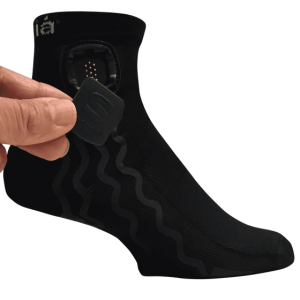Fashion has always been a space for innovation and creativity, but in recent years, technology has taken center stage. From 3D printing to smart fabrics, designers and brands are exploring new ways to create and wear clothing that pushes boundaries and expands possibilities. The intersection of fashion and technology, 3D printing, and smart fabrics are changing the game.
From Sketch to Reality: The Rise of 3D Printing

3D printing has been around for decades, but it’s only in recent years that it’s become more accessible and affordable for designers and brands. Essentially, 3D printing allows for the creation of physical objects from digital models, layer by layer. In fashion, this means that designers can create intricate, customized pieces that would be impossible to make by hand. For example, fashion house Iris van Herpen has used 3D printing to create fantastical, otherworldly designs that seem to defy gravity.
The Future is Smart: How Smart Fabrics Are Changing the Game
While 3D printing is all about creating physical objects, smart fabrics are about integrating technology into textiles themselves. Smart fabrics can have a range of features, from moisture-wicking to temperature regulation to biometric tracking. For example, a shirt made with smart fabric might be able to monitor your heart rate during a workout, or a jacket might automatically adjust its temperature based on the weather. Some smart fabrics are even able to generate electricity, meaning that clothing could potentially charge your phone or other devices.

Nadi X” yoga pants have built-in sensors that vibrate to guide wearers into proper yoga positions. Another is the “Oura” ring, which tracks sleep patterns and provides personalized recommendations for improving sleep quality.

Hexoskin Smart Shirts are made with a smart fabric that tracks your heart rate, breathing rate, and movement in real time. The data is sent to your smartphone or smartwatch, allowing you to monitor your fitness levels and make adjustments as needed. The shirts cost anywhere from $199 to $598.

Vollebak Graphene Jacket is made with a graphene-coated smart fabric that can conduct electricity. It’s designed to be ultra-durable and weather-resistant, making it ideal for outdoor activities. The jacket costs around $695.

Sensoria Smart Socks are made with a smart fabric that can monitor your running technique, including foot landing and stride length. The data is sent to your smartphone, allowing you to track your progress and make improvements. A pair of Sensoria Smart Socks costs around $199.

Myontec Mbody Shorts are made with a smart fabric that can track your muscle activity and fatigue during exercise. The data is sent to your smartphone or tablet, allowing you to monitor your performance and adjust your workout as needed. The shorts cost around $699.
Levi’s Commuter Trucker Jacket with Jacquard is made with a smart fabric that allows you to control your phone and other devices with simple gestures, like swiping or tapping the sleeve. It’s designed for cyclists and commuters who need to stay connected while on the go. The jacket costs around $198.
It’s worth noting that the prices for smart fabrics can vary widely depending on the complexity of the technology involved. Additionally, some smart fabrics require additional hardware, like sensors or batteries, which can also impact the overall cost.
Sustainability and Ethical Concerns: The Dark Side of Fashion Tech
As exciting as fashion tech is, it’s not without its downsides. One major concern is sustainability. 3D printing requires a lot of energy and often uses non-biodegradable materials like plastic. Additionally, the production of smart fabrics can be resource-intensive and presently rely on non-renewable resources.
There are ethical concerns surrounding the use of technology in fashion. As with any new technology, there is a risk of exploitation of labor and resources, particularly in developing countries where regulations may be laxer. It’s important for designers and brands to consider the environmental and social impact of their fashion tech innovations.
The Potential Benefits and Drawbacks of Integrating Technology into Clothing
If smart fabrics were to become mainstream, it would bring a whole new level of functionality to our clothing and could potentially revolutionize the way we live our lives. We could see a huge improvement in healthcare and wellness, with smart fabrics that monitor our health and help us make better choices. Imagine a shirt that tracks your heart rate and alerts you when it’s time to take a break or a jacket that adjusts its temperature based on the weather outside. Additionally, smart fabrics could help us reduce our carbon footprint, with clothes that generate their own electricity, provided they are made from sustainable materials.
However, there are potential downsides to consider. Smart fabrics are expensive and are presently not accessible to everyone. The integration of technology into our clothing raises concerns about privacy and data security, with companies potentially collecting and using our personal data for their own purposes. And finally, there’s the question of what happens to these smart fabrics when they’re no longer useful or wearable. Will they be recyclable or will they end up contributing to the growing problem of e-waste?
Overall, while the potential benefits of smart fabrics are vast, we must also be mindful of the potential drawbacks and work to address them as we move forward.
Looking Ahead: The Future of Fashion Tech
The future of fashion tech is both exciting and uncertain. As 3D printing and smart fabrics become more accessible and affordable, we can expect to see them become increasingly mainstream. Customized and personalized clothing could become the norm, with consumers having the ability to design and print their own garments from home. Additionally, smart fabrics are likely to become more advanced, incorporating new features like augmented reality and artificial intelligence.
Beyond 3D printing and smart fabrics, there are other technologies on the horizon that could revolutionize the fashion industry, such as nanotechnology or Biodesign. Virtual reality and augmented reality could change the way we shop for clothes, allowing us to try on clothing virtually and see how it looks and fits before making a purchase. Wearable technology, such as smartwatches and fitness trackers, is already popular and we may see even more advanced forms of wearable tech in the near future.
Fashion and technology have always been closely intertwined, but the rise of 3D printing and smart fabrics has taken this relationship to new heights. From customized, intricate designs to clothing that monitors your health and charges your devices, the possibilities are endless. However, as with any new technology, there are important considerations to keep in mind. Designers and brands must weigh the benefits of fashion tech against the potential environmental and ethical costs.
Smart fabrics may be the future of fashion, but they can also come with a hefty price tag. I mean, sure, your shirt can now monitor your heart rate and your socks can track your running technique, but can they also pay your rent? It’s important to remember that while these fabrics are incredibly innovative, they may not fit everyone’s budget. So if you’re on a tight budget, don’t worry – you can still achieve fashion-forward looks and great workouts with good old-fashioned fabric.
